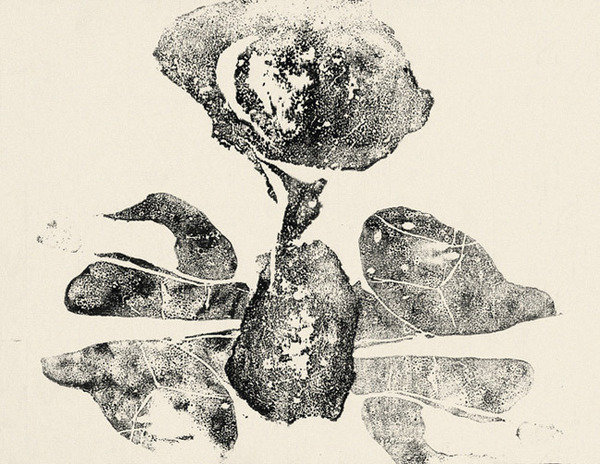Alina Szapocznikow
dal 9/3/2011 al 22/4/2011
Segnalato da
9/3/2011
Alina Szapocznikow
Galerie Loevenbruck, Paris
The exhibition features an ensemble of drawings dating from 1959 to 1972 that are among the most typical of Szapocznikow's graphic works. All come from the estate of the artist. A survivor of three Nazi concentration camps, this artist's work has acquired historical status and yet still seems urgently contemporary.

The posthumous fame of Alina Szapocznikow (1926-1973), which is eminently de-
served, serves as a reminder of the astonishing persistence with which the history of art is
being constantly rewritten. A survivor of three Nazi concentration camps, this artist’s work has
acquired historical status and yet still seems urgently contemporary. She began her career
in Poland after a short spell at the École des Beaux-arts in Paris, working in a powerful style
that reflected the political context at the time with pieces that were monumental and heroic
in approach. She gradually moved away from this manner and had completely thrown it off by
the time she moved to in Paris 1962. This city remained her home until her death in 1973, at the
age of 47. The works she produced there are overtly if not unhumorously infused with sexuality,
but also exuded a certain sense of unease.
Incorporating the newest materials (polyurethane
foam and polyester resin), they might be seen as stemming from Surrealism were they not so
extraordinarily inventive and colourful in a way that makes them closer to an early European
form of Pop Art. Compared to the sculpture-objects (including the extraordinary Illuminated
Lips and Belly-Cushions), which have recently enjoyed a revival of international interest, the
drawings dating from the late 1950s and the 60s give a fuller idea of her artistic universe, which
cannot be reduced to any one medium. Because they contain the germ of all the sculpture, but
also look beyond it, these drawings escape that register and manage to express lightness and
suspension at the same time as the artist’s attachment to the recurrent interplay of embryo-
nic forms, which are like a distant echo of the sculpture. Done in felt pen, ballpoint, coloured
pencil, sometimes combined with watercolour or monotype, they conjure up worlds shaped by
the artist’s richly imaginative obsessions, which affirm their own, implacable, intrinsic reality.
The exhibition at Galerie Loevenbruck will feature an ensemble of drawings dating from
1959 to 1972 that are among the most typical of Alice Szapocznikow’s graphic works. All
come from the estate of the artist.
The work of Alina Szapocznikow has been rediscovered in recent years thanks to the gallerists Gisela
Capitain (Galerie Gisela Capitain, Cologne) and Anke Kempkes (Broadway 1602 Gallery, New York), but
also to Elena Filipovic & Joanna Mytkowska, the curators of the ambitious retrospective to be put on at
the WIELS, Brussels, from 10 September 2011 to 1 January 2012, and then touring in 2012 to the Hammer
Museum in Los Angeles and the Museum of Modern Art in New York.
Alina Szapocznikow was born in 1926 in Kalisz, Poland, and died in Praz-Coutant, France, in 1973. Since
then there have been several exhibitions of her work both in France and internationally, most notably:
2010: Alina Szapocznikow, My American Dream, Broadway Gallery 1602, New York City, USA; 2007: Alina
Szapocznikow, Galerie Gisela Capitain, Cologne, Germany; 2004: Flesh at War with Enigma, Kunsthalle,
Basel, Switzerland; 1998: Alina Szapocznikow, 1926-1973, Zacheta-Narodowa Galeria Sztuki, Warsaw,
Poland; 1973: Alina Szapocznikow, 1926-1973, Tumeurs, Herbiers, Musée d ́Art Moderne de la Ville de Pa-
ris, France.
Her work has also been exhibited posthumously in group shows, including, 2010 : Les Promesses du passé,
Centre Pompidou, Paris, France; Seductive Subversion: Women Pop Artists 1958 – 1968, The University of
the Arts, Philadelphia, USA; 2009: Lynda Benglis, Louise Bourgeois and Alina Szapocznikow. After Awkward
Objects, Hauser & Wirth, London, UK; Women Artists Biennale, Incheon, South Korea; elles@centrepom-
pidou. Artists in the Collections of the Centre Pompidou, Centre Pompidou, Paris, France; The Photographic
Object, The Photographer’s Gallery, London, UK; 2008: On Time, East Wing Collection VIII, The Courtauld
Institute of Art, Somerset House, London, UK; Art comes before gold, Museum of Modern Art, Warsaw, Po-
land; 2007 Documenta XII, Kassel, Germany; 2002 Paris, Capital of the Arts, 1900 – 1968, Royal Academy
of Arts, London, UK.
Press contact :
Alexandra Schillinger, alexandra@loevenbruck.com, t 01 82 28 38 22,
assisted by Clio Lavau, factory@loevenbruck.com
Private view Thursday 10 March 2011, from 6 pm
Galerie Loevenbruck
6, rue Jacques Callot Paris
Opening hours : Tues-Sat, 11 a.m. - 7 p.m. and by appointment
free admission



